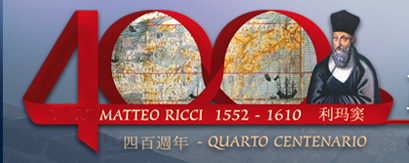Matteo Ricci Exhibition, a bridge to different cultures

The Matteo Ricci Exhibition at the Capital Museum in Beijing provides an opportunity for visitors to experience the cultural exchange between China and the West that occurred almost half a millennium ago.
A Jesuit priest from the Marche region in Italy, Ricci made a great journey to China in the late 1500s and introduced the Renaissance's achievements to China, a Confucian country that believed itself to be center of the world. Under Ricci's efforts, the oriental world began to understand the Western world through oil paintings, astronomical devices and books of Western philosophies brought by the missionary.
This year marks the 400th anniversary of the priest's death. To commemorate his irreplaceable contribution in building the bridge between the two cultures, 200 works from leading Chinese and Italian museums are on display. The works include Raphael's Eternal amidst Angels, Simone Martini's Madonna and Child and Titian's Portrait of Philip II.
The exhibition is divided into two parts. The first, with traditional Italian music playing in the background, displays the Western culture transmitted to China. The music then turns into traditional Chinese music in the second part, which follows Ricci's tour of China.
"The exhibition … shows us the importance of cultural integration," said Yang Qian, who studies world civilizations at Communication University of China. "Each country has to proceed in its civilization by communicating with others."
The exhibition ends on March 20 in Beijing and will head to Shanghai, Nanjing, Macao and Seoul in the following months.
 0
0 






